Hyundai Tucson vs Mitsubishi ASX – Differences & prices compared
Everyday use, family trips or long-distance drives – here’s where the differences show.
Discover whether Hyundai Tucson or Mitsubishi ASX fits your lifestyle better.
Costs and Efficiency: Looking at overall running costs, both models reveal some interesting differences in everyday economy.
Mitsubishi ASX has a convincingly advantage in terms of price – it starts at 20600 £, while the Hyundai Tucson costs 30600 £. That’s a price difference of around 10072 £.
Fuel consumption also shows a difference: Hyundai Tucson manages with 1 L and is therefore significantly more efficient than the Mitsubishi ASX with 4.40 L. The difference is about 3.40 L per 100 km.
Engine and Performance: Under the bonnet, it becomes clear which model is tuned for sportiness and which one takes the lead when you hit the accelerator.
When it comes to engine power, the Hyundai Tucson has a distinct edge – offering 252 HP compared to 158 HP. That’s roughly 94 HP more horsepower.
In acceleration from 0 to 100 km/h, the Hyundai Tucson is barely noticeable quicker – completing the sprint in 7.90 s, while the Mitsubishi ASX takes 8.50 s. That’s about 0.60 s faster.
In terms of top speed, the Hyundai Tucson performs hardly perceptible better – reaching 194 km/h, while the Mitsubishi ASX tops out at 180 km/h. The difference is around 14 km/h.
There’s also a difference in torque: Hyundai Tucson pulls evident stronger with 367 Nm compared to 270 Nm. That’s about 97 Nm difference.
Space and Everyday Use: Cabin size, boot volume and payload all play a role in everyday practicality. Here, comfort and flexibility make the difference.
Both vehicles offer seating for 5 people.
In curb weight, Mitsubishi ASX is somewhat lighter – 1296 kg compared to 1520 kg. The difference is around 224 kg.
In terms of boot space, the Hyundai Tucson offers noticeable more room – 620 L compared to 484 L. That’s a difference of about 136 L.
In maximum load capacity, the Hyundai Tucson performs slightly better – up to 1799 L, which is about 203 L more than the Mitsubishi ASX.
When it comes to payload, Hyundai Tucson somewhat takes the win – 545 kg compared to 449 kg. That’s a difference of about 96 kg.
Who wins the race?
The Hyundai Tucson proves to be is largely superior and therefore becomes our DriveDuel Champion!
Hyundai Tucson is the better all-rounder in this comparison.
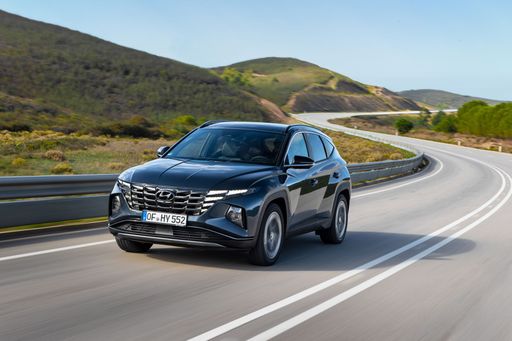
Hyundai Tucson
Hyundai Tucson
The Hyundai Tucson is a standout choice in the compact SUV segment, offering a perfect blend of style, comfort, and practicality. Its modern design is complemented by a spacious interior that provides ample room for passengers and luggage alike. With advanced technology and safety features, the Tucson ensures a smooth and enjoyable driving experience.
details @ hyundai.news
@ hyundai.news
 @ hyundai.news
@ hyundai.news
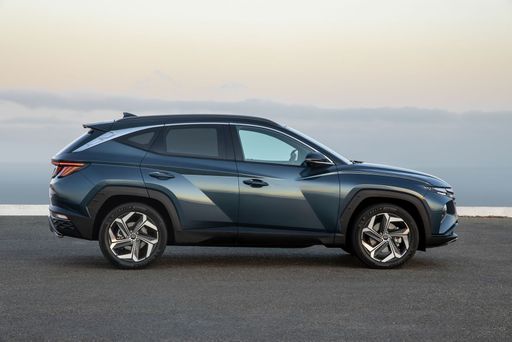 @ hyundai.news
@ hyundai.news
 @ hyundai.news
@ hyundai.news
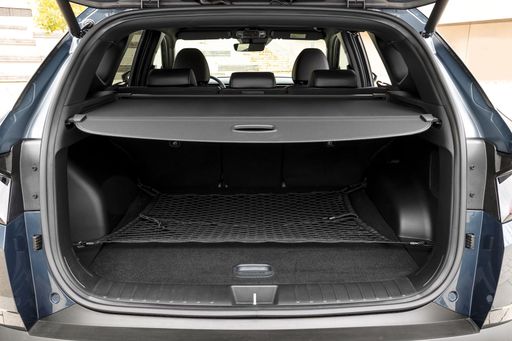 @ hyundai.news
@ hyundai.news
Mitsubishi ASX
The Mitsubishi ASX presents itself as a compact crossover that combines practicality with style. Its sleek design and versatile interior make it an appealing choice for both urban and rural settings. With a focus on providing a comfortable driving experience, the ASX also offers a range of modern features that enhance connectivity and safety.
details @ Mitsubishi
@ Mitsubishi
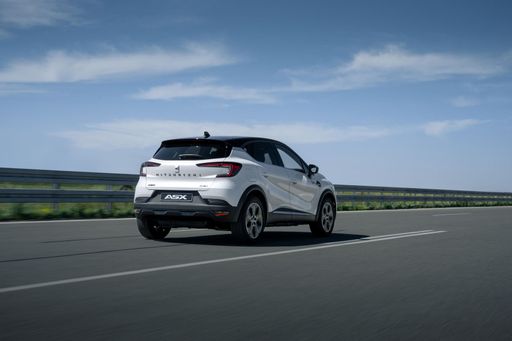 @ Mitsubishi
@ Mitsubishi
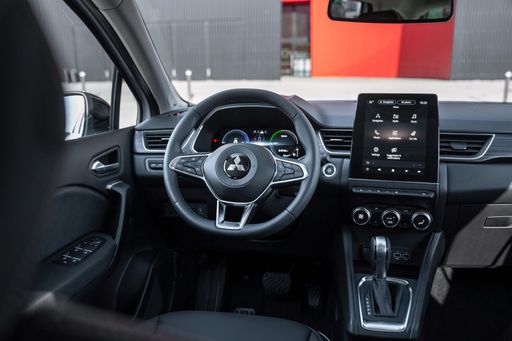 @ Mitsubishi
@ Mitsubishi
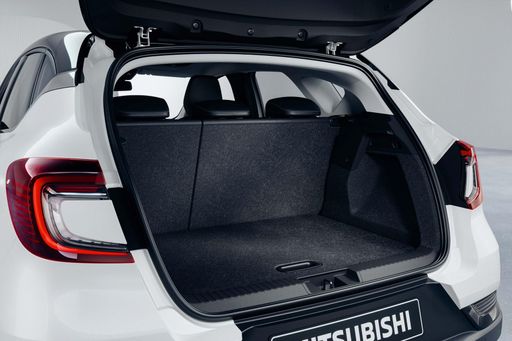 @ Mitsubishi
@ Mitsubishi

|

|
|
|
|
Costs and Consumption |
|
|---|---|
|
Price
30600 - 46300 £
|
Price
20600 - 32500 £
|
|
Consumption L/100km
1 - 6.9 L
|
Consumption L/100km
4.4 - 6 L
|
|
Consumption kWh/100km
-
|
Consumption kWh/100km
-
|
|
Electric Range
64 - 70 km
|
Electric Range
-
|
|
Battery Capacity
-
|
Battery Capacity
-
|
|
co2
22 - 156 g/km
|
co2
99 - 135 g/km
|
|
Fuel tank capacity
42 - 54 L
|
Fuel tank capacity
48 L
|
Dimensions and Body |
|
|---|---|
|
Body Type
SUV
|
Body Type
SUV
|
|
Seats
5
|
Seats
5
|
|
Doors
5
|
Doors
5
|
|
Curb weight
1520 - 1889 kg
|
Curb weight
1296 - 1493 kg
|
|
Trunk capacity
546 - 620 L
|
Trunk capacity
348 - 484 L
|
|
Length
4510 - 4520 mm
|
Length
4239 mm
|
|
Width
1865 mm
|
Width
1797 mm
|
|
Height
1650 mm
|
Height
1575 mm
|
|
Max trunk capacity
1721 - 1799 L
|
Max trunk capacity
1458 - 1596 L
|
|
Payload
525 - 545 kg
|
Payload
397 - 449 kg
|
Engine and Performance |
|
|---|---|
|
Engine Type
Diesel MHEV, Petrol MHEV, Petrol, Full Hybrid, Plugin Hybrid
|
Engine Type
Petrol, Petrol MHEV, Full Hybrid
|
|
Transmission
Automatic, Manuel
|
Transmission
Manuel, Automatic
|
|
Transmission Detail
Dual-Clutch Automatic, Manual Gearbox, Automatic Gearbox
|
Transmission Detail
Manual Gearbox, Dual-Clutch Automatic, Automatic Gearbox
|
|
Drive Type
Front-Wheel Drive, All-Wheel Drive
|
Drive Type
Front-Wheel Drive
|
|
Power HP
136 - 252 HP
|
Power HP
91 - 158 HP
|
|
Acceleration 0-100km/h
7.9 - 11.6 s
|
Acceleration 0-100km/h
8.5 - 14 s
|
|
Max Speed
180 - 194 km/h
|
Max Speed
168 - 180 km/h
|
|
Torque
265 - 367 Nm
|
Torque
160 - 270 Nm
|
|
Number of Cylinders
4
|
Number of Cylinders
3 - 4
|
|
Power kW
100 - 185 kW
|
Power kW
67 - 116 kW
|
|
Engine capacity
1598 cm3
|
Engine capacity
999 - 1789 cm3
|
General |
|
|---|---|
|
Model Year
2024
|
Model Year
2024 - 2025
|
|
CO2 Efficiency Class
E, F, D, B
|
CO2 Efficiency Class
D, C
|
|
Brand
Hyundai
|
Brand
Mitsubishi
|
What drive types are available for the Hyundai Tucson?
Available configurations include Front-Wheel Drive or All-Wheel Drive.
The prices and data displayed are estimates based on German list prices and may vary by country. This information is not legally binding.
